Styrkene
The Styrkene, rom Aedelish styrkr word meaning "strength" or "force", is Aedeland's military, comprising five branches: the Ríkes Sjøstyrkene, Ríkes Hæren, Valkyrja, Væringet, and Styðja/Freikorps. Aedeland allocates about 3% of its GDP to defense, primarily funding the high-cost assets of the Valkyrja and Ríkes Sjøstyrkene.
History
Aedeland's military origins lie in its unification in 7305, when local and regional military forces were consolidated into two primary branches: the Hæren (Army) and Sjøstyrkene (Navy). This reorganization established a centralized military structure while allowing regional units to retain some autonomy. The early focus was on defending Aedeland’s borders, securing maritime routes, and enabling economic growth through strategic control of key waterways.
In 7292, Aedeland established the Bule Republics, a colony in the southern hemisphere intended to access the Phasian, a landlocked ocean critical for trade with markets isolated by the hemispherical divide. The colony’s governance was entrusted to the Imperial Sortarnland Company, which maintained a private army known as the Væringet to protect its interests and pacify the region. By 7421, an overland route combining railways and river barges connected the colony to the Phasian, solidifying Aedeland’s economic foothold.
The Væringet became an integral part of Aedeland’s military operations and colonial strategy. In 7518, it was formally integrated into the national military, growing to become one of the largest armies in Anaria by the 7560s. This force was instrumental in maintaining Aedelish dominance in the colonies and was later repurposed during the Technate as a commando force open to foreign nationals.
The Pan-Anarian War (7498–7518) marked a transformative period for Aedeland's military. The war necessitated the standardization of military structures and the creation of a professional officer corps. Despite these reforms, temporary armies composed of local units were still used in various campaigns. The conflict highlighted the limitations of Aedeland’s navy, the Sjøstyrkene, which struggled against the dreadnoughts of rival powers. However, Aedeland's land forces proved decisive in several key battles, particularly during the Auresian campaign. The war also led to the formation of Aedeland’s first standing army. Aedeland emerged as a leader in the age of airships, with its Valkyrja air force playing a critical role in both the Pan-Anarian War and subsequent colonial campaigns. Lighter-than-air gunships provided a distinct advantage in reconnaissance and offensive operations. These airships were particularly effective in controlling vast colonial territories and maintaining Aedeland’s influence overseas. By the war’s end, Aedeland had established itself as a significant military power in Anaria, with a growing global reach through its colonies and trade routes.
Following the Pan-Anarian War, Aedeland focused on securing access to its colonies and trade routes, particularly the Afti Straits, controlled by Anat Tahan. This chokepoint was vital for connecting Aedeland to its southern hemisphere colonies. While Anat Tahan never closed the straits, the potential threat underscored Aedeland’s reliance on maritime security.
As the Aedelish Empire began to decline in the late 7500s, its military remained one of the largest in the world, with vast colonial forces and a global operational reach. Under the Technate, the military was gradually weakened as resources were diverted elsewhere. By the late 7580s, the development of more advanced aircraft marked the decline of airships in military roles. Aedeland introduced its first fighter aircraft in 7597, though these early designs were quickly outpaced by innovations from Anisora and Arvor. The introduction of the Ótamarr and later the Sverð represented high points in Aedelish aircraft design, allowing the Valkyrja to maintain a competitive edge during a period of economic stagnation.
The atomic jet age heralded a resurgence for Aedeland’s military. The Valkyrja developed powerful jet aircraft that reestablished Aedeland as a dominant air power. This era also marked a strategic shift in Aedeland’s military focus. Since the 7660s, the Styrkene adopted a fast-attack warfare model, prioritizing nuclear technology, advanced aircraft, rockets, and submarines over traditional surface ships and ground forces.
This shift reflected Aedeland’s emphasis on precision strikes and technological superiority, with its military strategy centered on deterrence and rapid response. Despite speculation, Aedeland has remained ambiguous about whether it possesses nuclear weapons.
Aedeland’s military history is one of adaptation and evolution, shaped by its strategic priorities and technological advancements. From its early consolidation during unification and colonial expansion through the Pan-Anarian War to its dominance in the atomic jet age, Aedeland has continually redefined its military strategy to meet the challenges of an ever-changing geopolitical landscape. Today, the Styrkene remains a streamlined but potent force, reflecting Aedeland’s legacy of innovation and strategic foresight.
Structure
Aedeland's military is constitutionally under the authority of the Fører, with all officers swearing allegiance to the Aedelish constitution and the Fører. The senior military official is the Lord Martial. Though the six branches of the Styrkene are independent, they operate in coordination, sharing facilities due to Aedeland's limited number of major installations.
Valkyrja
Aedeland's Air Force, known as the Valkyrja (lit. "chooser of the slain"), is the dominant branch of the military, holding most high command positions and receiving the majority of military funding. Its primary strike capability consists of long-range, high-altitude, high-speed nuclear-powered bombers, fighters, and interceptors divided into three commands the Blitzvápn fighter command, the Ráðvápn bomber command, and the Myrkvápn reconnoissance command. The Valkyrja operates several auxiliary airfields across Vesturland, Cykeria, and the Aereyjar.
Skálm
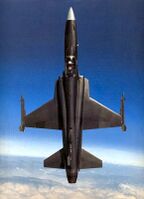 |
Ingeniously simple and economical frontline advanced fourth generation air superiority light fighter. | Powerplant: 1 DAC atomic turbofan (17,000 lbf thrust)
Maximum speed: 1,800 mph supercruise Service ceiling: 60,000 ft Range: Unlimited Armament: 2 x 20mm cannon 1 x 1,000 lbs bomb or 2 x 500 lbs bombs 2 wingtip missiles 4 underwing missiles or rockets |
|---|---|---|
Æðstiengill
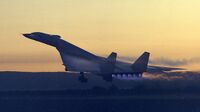 |
A strategic deep penetration atomic supersonic bomber with a 50,000-pound payload and unlimited range. | Powerplant: 6 DAC atomic turbojets (31,000 lbf thrust each)
Maximum speed: 2,056 mph supercruise Service ceiling: 70,000 ft Range: Unlimited Payload: 50,000 pounds |
Valstara
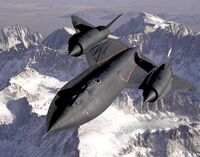 |
A strategic high altitude deep penetration atomic reconnaissance aircraft that utilizes two direct air cycle atomic engines and is capable of sustained supersonic cruise with unlimited range. | Powerplant: 2 DAC atomic turbojets (31,000 lbf thrust each)
Maximum speed: 2,200 mph supercruise Service ceiling: 80,000 ft Range: Unlimited Armament: 36–48 in (910–1,220 mm) camera |
Jötunn
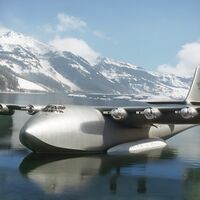 |
Amphibious transport designed to carry 150,000 pounds, 750 fully equipped troops or two tanks the Jötunn atomic transport is among the largest aircraft in the world. | Powerplant: 4 DAC atomic turbofans (40,440 lbf thrust each)
Maximum speed: 520 mph supercruise Service ceiling: 45,000 ft Range: Unlimited Payload: 150,000 pounds, 750 fully equipped troops or two tanks |
Skyndastjarna
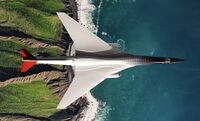 |
Military version of the Pan-An Skylína passenger aircraft used for official transport. Aircraft use the same livery as Pan-An. | Powerplant: 3 DAC atomic turbofans (22,000 lbf thrust each)
Maximum speed: 1500 mph supercruise Service ceiling: 60,000 ft Range: Unlimited Payload: 100 passengers |
Ríkes Sjøstyrkene
Since the 7560s, Aedeland has abandoned surface naval warfare in favor of an exclusive focus on submarines. The u-boat fleet is organized into four flotillas, known as Jægeráða. Jægeráða-Norðan and Jægeráða-Eystri operate in the Nordsjøen and Stolvic Ocean from a shared base at Jægerból-Ålesund. Jægeráða-Suðr and Jægeráða-Vestri operate in the Zeeängten and Vestsjøen from a base at Jægerból-Ærilar. These secret submarine bases are located in hardened subterranean sea caves, making them undetectable from the surface.
Sig-Class Submarine
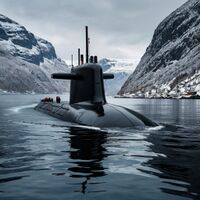 |
Advanced attack submarine is among the quietest in the world due to its relatively small size, specially designed hull with anechoic tiles, a low-noise propulsion system, and careful attention to internal sound dampening. | Powerplant: 1 x 3,000 horsepower electric motor powered by a pressurized water reactor
Maximum speed: 23 kts sustained Range: Unlimited Armament: 4 21" torpedo tubes 4 missile tubes. |
|---|---|---|
| Líka-Class Hospital Ship
|
Converted from the Auðun commercial supertanker, the Líka-class hospital ships have 1,000 patient beds and 12 operating rooms. | Powerplant: 2 x 24,500 hp turbines powered by a pressurized water reactor
Maximum speed: 17 kts Range: Unlimited |
Ríkes Hæren
Aedeland's army, called the Hæren, is a decentralized regimental militia and gendarmerie. It operates with significant independence, granted by the Fører in exchange for the support of powerful Ætts. However, traditional ties are no longer honored, and commands are assigned at the Fører's discretion.
The Hæren is organized into three main branches:
- Jægerkorps: The foundational infantry units, specializing in vertical envelopment and working closely with the Valkyrja.
- Kommandos: Specialized in maritime operations, they cooperate with the navy.
- Herklæði: Armored and mechanized units, which are being phased out as the military transitions to special operations.
Coastal regiments typically specialize as kommandos, while inland regiments focus on jægerkorps or herklæði. Most regiments also serve as local gendarmes for internal security.
Regiments are regionally based, and recruits are usually accepted into the closest unit. Serving in the Hæren is the primary way to enter the Styrkene. Those wishing to join the Valkryja or Sjøstyrkene must first volunteer for the Hæren and are promoted to technical service upon nomination.
The Hæren is the largest branch of the Styrkene, with the most officers and warranted officers. As a result, those who remain in the Hæren are more likely to be promoted, and Hæren officers hold a disproportionate number of staff positions.
Væringet
The Væringet is an elite corps of the Styrkene, created in 7518 to allow foreign nationals to join the Aedelish military. Its members are known as Væringjar, meaning sworn men. Under the Sørtarnland Company, the Væringet surpassed the Styrkene in size and capability. However, after the collapse of Aedeland's foreign empire, the Væringet was greatly reduced and now exists as a single unit, fully subordinate to but distinct from the Hæren with its own unique rank names and a dress uniform influenced by the historical Ithrieni military.
The Væringet is open to foreign recruits as well as Aedelish nationals, making it a highly competitive entry point into the Styrkene. Its bases of operations in Ærilar and Lanzarētē as well as its reputation for exclusivity add to its prestige. Men and women of any nationality and age can volunteer. However, only Aedelish nationals may hold officer ranks within the Væringet. Initial training lasts six weeks and takes place at the Bú (the farm in Aedelish), a facility south of Ærilar.
Aedelish nationals who volunteer for the Væringet have a promotion advantage over those joining the Ríkes Hæren, with most being promoted to aspirant immediately after graduation from the Bú. As such, joining the Væringet is the fastest route to the Valkryja or Sjøstyrkene.
Styðja
The Styðja is a paramilitary non-combat service organization focused on public works and relief programs. It operates under the same rank structure and uniforms as the regular Styrkene. Styðja camps have a dual-authority structure: a supervisory staff from the War Office and a majority of Styðja officers under the Home Office's authority. Camp leadership includes a commander (typically a captain) and company commanders (typically lieutenants) responsible for discipline and administration. Technical training, work supervision, and specialist roles are handled by Styðja officers.
Styðja-skilja camps carry out public projects and internal improvements to benefit young Aedelmen, and the Styðja’s medical corps operates birthing and wellness centers across Aedeland. Styðja-kulī camps are more prison-like, housing asocial individuals such as alcoholics, beggars, and nonconformists who perform hard labor. Styðja-kulī conscripts serve for four years, with the option of early release in exchange for chemical sterilization.
Installations
The Styrkene operates five major facilities: two submarine pens, two airbases, and one garrison. Additionally, there are two permanent Styðja camps and several temporary ones funded by the Home Office.
- Rik Øverste: Located in Ålesund, Rik Øverste is the central command of the Styrkene. Built in 7345 as the headquarters for the Styrkene's war staff, it now mainly serves as the military academy. It is connected to Gimlé and other facilities via underground tunnels
- Valhreiðr: A hardened airbase in the Auðigrháls, Valhreiðr houses the Valkyrja and Aedeland's secret black programs. It includes underground hangars for 200 aircraft, multiple runways, a hospital, and munitions depots. Key squadrons based here include Hræsvelg, Ǫrnstanga, Grimnir, Sigðir, Seiðr, and Eigin Forer.
- Fjarrihreiðr: Located on Maleficarion in the Aereyjar, Fjarrihreiðr is a large airbase. It hosts squadrons like Ýrungr and Sviðrir (bombers), and Kjalarr and Farmatýr (transport aircraft).
- Jægerból-Ålesund: The Jægerból-Ålesund submarine pens, located on Værøya in the Østrefjord, are the largest naval base for the Ríkes Sjøstyrkene. It supports 50 u-boats with maintenance and operational facilities. The base is self-contained, with family housing in the nearby seaport village. It hosts Jægeráða-Norðan and Jægeráða-Eystri flotillas.
- Jægerból-Ærilar: An underground base in northern Ærilar, Jægerból-Ærilar accommodates 25 u-boats and one dry-dock repair bay. It is smaller than the Ålesund facility but fully self-contained and operates alongside the historic naval headquarters at Ærilar.
- Fornsighalla Garrison: The Fornsighalla fortress, overlooking Ærilar, was once the headquarters of the Imperial Sørtarnland Company. It now serves as the headquarters for the Væringet.
Personnel
All males must serve a minimum of two years in a local regimental militia upon turning 18, or four years in a non-combat role within the Styðja or Free Corps. While the militias aren't considered a standing army, about 3% of Aedeland's population is in national service at any given time, and 20% of men can be recalled in an emergency.
Volunteers may join at age 15, with early enrollment benefiting their service record. Only volunteers from the Hæren can be selected for the Valkryja or Sjøstyrkene. Conscientious objectors may refuse service but lose political and social rights. Women may serve only in non-deployable roles, such as the medical corps or secretarial positions.
Physical Standards
Militia service is universal and no physical requirements exist for volunteers and conscripts as a result. Aspirants must pass a basic fitness test requiring a minimum of five pull-ups in one minute, fifty push-ups in one minute, a one-minute plank, and a nine-minute mile. To be competitive for promotion, candidates of any rank should ideally perform twenty pull-ups in one-minute, seventy push-ups in one minute, a four-minute plank, and a six minute mile. No accommodation is made for age or sex.
Special forces have more demanding mission specific standards. Members of the Jægerkorps, for example, must be able to carry a 40 pound ruck at a 30-minute a mile pace and an under 20-minute a mile pace to be competitive for promotion.
Rank Structure
Ranks are divided into officers and other ranks.
- Officers: The top 5% of Styrkene personnel. They are eligible for command positions and hold executive authority from the Fører. Officers include Løjtnant (junior officers), Kapitän (field officers), and Oversti/Kommandørs (flag officers). Stratárchis is a wartime rank above Kommandørs, similar to Field Marshal, with ceremonial baton.
- Other Ranks: These include non-commissioned officers (NCOs), such as serjants in the Hæren/Valkryja and batsveinn in the Sjøstyrkene. In the Væringet, they are called al-raqib. These "regulars" form the backbone of the Styrkene and wear silver chevrons indicating years of service. Specialized posts exist for senior NCOs.
Volunteers (frivillig) and conscripts (þræls) in the Rik Hæren and Væringet hold no rank or insignia and are often referred to collectively as "irregulars". Volunteers in technical training temporarily hold the rank of aspirant.
Uniforms
In 7592, the Stykene adopted standardized uniforms that replaced the various regimental styles previously worn. There are four standard uniform types: ceremonial dress, home service undress, field dress, and utility dress. Specialization and unit embroidered quadrant patches, called tabs, are worn on the upper sleeves.
- Dress: Worn by professional ranks (sergeant and above), the standard uniform worn by members of the Hæren and Valkyrja consists of a black woolen stand-collared cavalry shell jacket worn open, matching trousers with red double-lampasses, red cummerbund, patent-leather jackboots, and a peaked cap with a black cover and a red band. Members of the Hæren wear a black woolen single breasted great coat with visible buttons or a black cape with a red silk liner. Members of the Valkyrja wear a black double breasted leather great coat with red silk liner with hidden buttons worn with one open lapel. Members of the Sjøstyrkene wear a similar monochromatic version of the uniform worn buttoned under a black cummerbund, with black unornamented trousers, patent-leather black oxford shoes, and a peaked cap with a black band. Members of the Styðja/Freikorps wear a uniform very similar to the Sjøstyrkene in monochromatic white. Both the Sjøstyrkene and Styðja/Freikorps wear a black woolen peacoat. Decorations are only authorized to be worn on the dress uniform.
- Undress: A less formal version of ceremonial dress, worn for everyday service, which includes a wool tunic, stirruped overall trousers, paddock boots with wrapped leggings, a peaked cap, and a frock coat in winter. All services wear a monochromatic black uniform in winter while members of the Hæren wear khaki in summer and members of the Sjøstyrkene and Styðja/Freikorps wear white in summer. Members of the Valkyrja are authorized to wear a leather version of the uniform either in whole or in part.
- Field Dress: A durable, utility uniform worn by all ranks. It includes a woolen (winter weight) or cotton (summer weight) short jacket, shirt, and trousers with puttees. The Hæren wear dark olive green, while the Valkryja and Styðja wear khaki. Officers may mix shades and wear a tie.
- Utility Dress: A variety of utility uniforms are authorized as needed. All services utilize a pull-over jumper of blue denim and trousers of the same material. Khaki coveralls and leather jackets are authorized for operators and crew of aircraft, submarines, and armored vehicles. No rank or specialty insignia is worn with the utility dress.
The Væringet's unique uniforms are largely based on Tharnian military uniforms, particularly the Ithrieni military of the 7500s.
- Dress: Non-commissioned officers and other ranks wear black short open-fronted jackets ornamented with braided cord, baggy white trousers (serouel), red sashes, and a red fez-like chéchia head-dress. Officers wear a black tunic ornamented with braided cord and a red sash, black jodhpurs with a wide single lampasse worn with tall riding boots with distinctive steel heal plates, and a red pummeled brimless black shako.
- Undress: A less formal version of the ceremonial dress with ornamentation such as braided cord and pummels removed.
- Field Dress: Based on the Imperial Aedelish colonial uniforms worn in the late 7500s. Officers wear a heavy cotton tunic under a leather utility belt with a supporting shoulder strap, cotton jodhpurs, and tall brown riding boots. Other ranks wear a similar uniform with two suspender-like straps instead of the cross-belt and cotton trousers or cotton shorts with puttees. All ranks wear wide brimmed felt hat worn at an angle, tilted to the right. Other ranks wear one side of the brim turned up or pinned to the side of the hat to allow a rifle to be slung over the shoulder. Khaki is worn in temperate climates and white is worn in tropical climates.
- Utility Dress: The Væringet is closely associated with the black dominant tiger-striped camouflaged combat utility uniform consisting of a maroon baret and loose fitting durable ripstop cotton short jacket with rolled sleeves and trousers worn bloused into tall black jungle boots. This same uniform is authorized to be worn in theater by select Jægerkorp and Kommando units of the Ríkes Hæren.
Specialty Insignia
- Ratings: Service members qualified in certain specialties are authorized to wear specialized insignia on the left breast. These include pilots, parachutists, submariners, snipers, and divers.
- Tabs: Service members assigned to specialized units are authorized to wear specialized shoulder tabs on the left shoulder. These include members of the Jægerkorps, Kommandos, Herklæði, Jægeráða, Blitzvápn, Ráðvápn, Myrkvápn. Sub-tabs are authorized to identify further specialization. For example, members of the Jægerkorps and Kommandos specializing in jungle or mountain combat may wear Gróður or Alpen tabs.
Decorations (in order of precedence)
- Ríkgeir: A black iron cross awarded for exceptional bravery and merit in combat, the highest decoration. The ribbon is authorized to be worn from the second button of the dress, undress, and service uniforms.
- Blóð Ære: Awarded for combat wounds. The medallion is made of iron from the flagship Sørland.
- Crisis Medal: Awarded for active combat service.
Historic
- Madʿūk Medal: Awarded for service in Zalelsan Straits Campaign (7459).
- Pan-Anarian War Campaign Medals: Awarded for service in one of five major campaigns of the Pan-Anarian War (7498-7543).
- Hagen-Dazs I: Awarded for service during the Annexation of West Hagen (7518).
- Hagen-Dazs II: Awarded for service in the Pan-Stoldavic War (7584-7598).
- Kadīsa Medal: Awarded for service in the Hanniyas Campaign (7578-7581).
- Hel-vízkr Medal: Awarded for service in the Wolgos Scourge (7598-7603).
- Hergom Medal: Awarded to prisoners held in New Xedun (7598-7603).
Equipment
Military reforms in the 7660s led to the standardization of equipment used throughout the Styrkene. The standardized primary rifle and machine gun cartridge is the .30-06 and .45 is the standard side arm cartridge. The Styrkene's preference for heavier calibers is attributed to desirable "stopping power" during the Wolgos Scourge.
Standard Service Rifle (Samvápn)
The standard service rifle is the development through constant improvement of a one hundred and sixty year-old design. The original bolt-action design introduced during the Pan-Anarian war was replaced at the conclusion of the conflict. A semi-automatic version was developed during the Hanniyas Campaign but not fully adopted until nearly a decade later due to skepticism within the Rik Øverste over the reliability and weight. Semi-automatic rifles were not widely used by the Styrkene until the Wolgos Scourge. The current standard rifle is based on this same platform with constant improvements in reliability, weight reduction, and functionality. The standard (Samvápn) semi-automatic rifle is 45 inches and weighs 11 lbs (8lbs with plastic furniture) loaded with a 20 round detachable magazine and is capable of about 40-60 aimed rounds per minute and an effective range of 1500 ft. The shortened carbine version (Stormvápn) is 33 inches and weighs 7 lbs (5lbs with plastic furniture) loaded with select-fire capability with a 700-round per minute rate of fully automatic fire and an approximate 900 ft maximum effective range. The Pan-Anarian era bolt-action rifle remains in active service as a sniper rifle.
Standard Service Pistol (Samhliðvápn)
The standard service pistol replaced the Pan-Anarian War era automatic revolver at the same time the standard semi-automatic Standard Service Rifle was adopted. The semi-automatic pistol features an exposed hammer, a double-action trigger mechanism, and a single-column six round magazine. Service pistols are exclusively authorized for officers of the Styrkene.
Sub-Machine Gun (Þórsblik)
Developed in the 7660s, the Þórsblik replaced to the Wolgos Scourge-era sub-machine gun. The compact fully automatic machine gun is 26 inches and weighs 7 lbs and has a 20 round detachable box magazine. It has a 700 round per minute fire rate and 150 ft effective range. The Þórsblik is used exclusively by units of the Jægerkorps and Kommandos.
Heavy Machine Gun (Mikilvægr)
Mikilvægr is an air-cooled, belt-fed machine gun that is the development of a post Pan-Anarian design. Larger 0.50 caliber variants have been developed but have yet to be adopted. The standard version is 56 inches and weights 90 lbs not including the 250-round cloth belt and has a 500 round per minute fire rate and an effective range of 5000 ft.